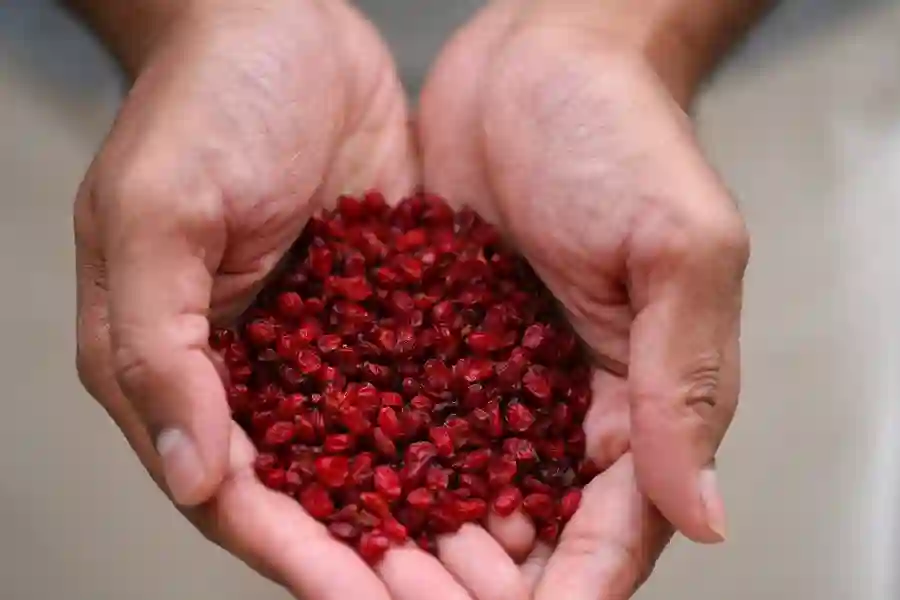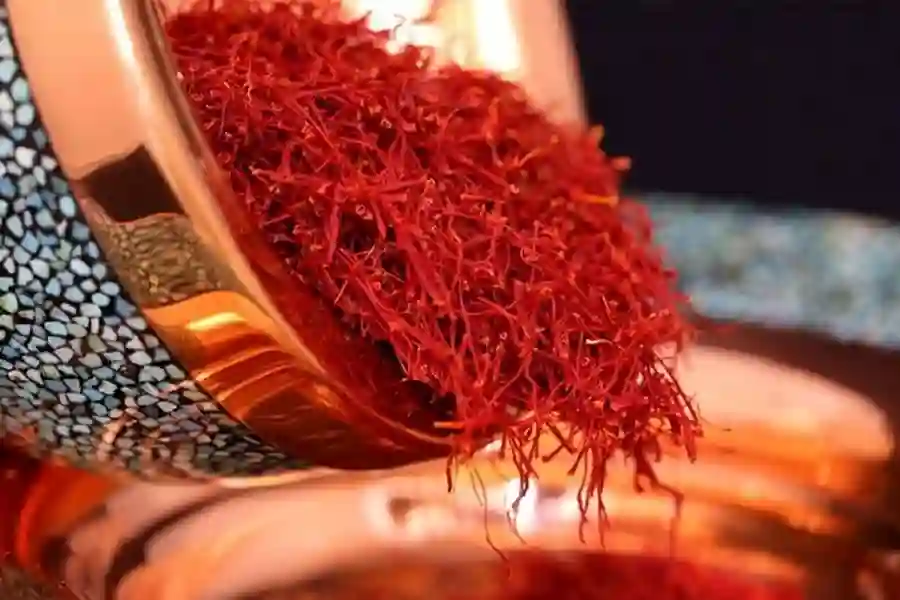Discover the Persian barberry, a tiny, ruby-red fruit that packs an intensely flavorful punch. Known in Iran as “Zereshk,” this isn’t just another berry; it’s a culinary gem with a unique tangy taste and a vibrant color that can elevate any dish. For international importers looking to stand out, this fruit offers a gateway to niche markets hungry for exotic and healthy ingredients. Understanding the unique appeal and business potential of the Persian barberry is your first step toward introducing a truly special product to a global audience.
What is Persian Barberry?
The Persian barberry is the dried, seedless fruit of the Berberis vulgaris shrub. While other varieties of barberry grow worldwide, the Iranian type is uniquely cultivated for its culinary qualities, particularly its lack of seeds and vibrant red color. For centuries, it has been a cornerstone of Persian cuisine, providing a sharp, tart contrast in countless dishes, most famously in the iconic “Zereshk Polo” (Barberry Rice). Its distinct flavor and jewel-like appearance make it more than just an ingredient; it is a signature element that defines a rich culinary tradition, making the Persian barberry a sought-after commodity.

The Origin of Barberries in Iran
The heartland of Persian barberry production is South Khorasan, a province in eastern Iran. This region’s unique arid climate and specific soil conditions are perfectly suited for cultivating the highest quality barberries in the world. In fact, Iran accounts for over 95% of global production, making it the undisputed origin and authority on this fruit. This long-standing agricultural tradition, passed down through generations of farmers, ensures that the cultivation and harvesting methods are perfected to yield a product with optimal color, size, and flavor, establishing a legacy of quality.
The Harvesting and Drying Process
The journey of the Persian barberry from farm to table begins with a challenging harvest. The berries grow on thorny bushes, and farmers must carefully collect the delicate fruit-laden branches. After harvesting, the drying process is critical and determines the final quality and grade of the product. The branches are often taken to cool, dark halls where they are hung to dry slowly over several months. This traditional method allows the berries to dry while remaining plump and retaining their bright color. This meticulous process ensures the premium quality expected from an authentic Persian barberry.
The Defining Features of a Premium Persian Barberry
What makes the Persian barberry so special? Its uniqueness lies in a combination of factors that distinguish it from other berries and even other barberry varieties. A premium-grade Persian barberry is recognized by its brilliant red hue, consistent size, and complete absence of seeds. Unlike sweet berries such as cranberries or raisins, its primary characteristic is a sharp, acidic flavor that adds complexity rather than simple sweetness. These defining features are a direct result of the specific cultivar grown in Iran and the traditional processing methods used, creating a product that is truly one-of-a-kind.
A Unique Tangy Flavor Profile
The flavor of the Persian barberry is its most distinguishing feature. It offers a sharp, clean tartness that is invigorating and palate-cleansing. This acidity is not overwhelmingly sour but rather a bright, zesty note that can cut through the richness of meats, grains, and fats. It provides a sophisticated contrast in both sweet and savory applications, unlike the one-dimensional sweetness of many other dried fruits. For importers, this unique flavor profile is a significant selling point, appealing to chefs and food manufacturers looking for an ingredient that can add a surprising and memorable twist to their creations.
A Powerhouse of Health Benefits
Beyond its culinary uses, the Persian barberry is gaining recognition as a functional food due to its impressive health benefits. It is naturally rich in an active compound called berberine, which has been studied for its potential positive effects on health. This nutritional profile makes it highly attractive to the growing market of health-conscious consumers.
Key health-promoting aspects include:
- Rich in Berberine: A powerful plant compound linked to supporting healthy blood sugar levels and cardiovascular function
- High in Antioxidants: Contains Vitamin C and other antioxidants that help protect the body against free radical damage
- Source of Fiber: Supports digestive health and contributes to a balanced diet
- Anti-inflammatory Properties: Traditional medicine has long used it for its anti-inflammatory effects

Understanding the Key Varieties: Pofaki vs. Anari
For an importer, knowing the two main types of Persian barberry is essential. The “Pofaki” (puffy) variety is the premium grade. It is dried slowly in the shade, which results in a plump, puffy appearance, a bright red color, and lower moisture content. The “Anari” (pomegranate-colored) variety is dried more quickly under the sun. This method produces a darker, slightly shrunken berry with higher moisture content. While both are high-quality, Pofaki is generally preferred for its superior appearance and longer shelf life, making it the top choice for retail markets.
Why Importing Persian Barberry is a Good Move?
For any importer, finding a product that offers uniqueness, growing demand, and profitability is the ultimate goal. The Persian barberry successfully ticks all these boxes, presenting a compelling business opportunity. It allows you to tap into the expanding market for specialty foods and healthy ingredients, giving you an edge over competitors who only offer mainstream products. Sourcing Persian barberry is a strategic decision that diversifies your portfolio with a high-value item that resonates with modern culinary and wellness trends, positioning your business for growth.
Growing Demand in Culinary and Health-Conscious Markets
The global food landscape is shifting. Consumers and chefs are increasingly adventurous, seeking out unique flavors and ingredients that tell a story. The Persian barberry fits perfectly into this trend. Its use is expanding beyond traditional Persian cuisine into modern gastronomy, health food products, and even craft beverages. As part of the rising interest in Persian dried fruits, the barberry is being discovered by a new generation of consumers who value both its exotic taste and its health benefits, creating a steadily growing demand that importers can capitalize on.
Competitive Edge Through Sourcing from the Origin
Since Iran is the primary producer of the world’s culinary barberries, sourcing directly from the origin provides a significant competitive advantage. It allows you to access the freshest product at the most competitive prices by eliminating unnecessary middlemen. This direct line to the source ensures you receive an authentic, high-quality Persian barberry, not a lower-grade imitation. This cost-effectiveness, combined with the premium nature of the product, allows for healthy profit margins while offering your customers a superior item that builds brand loyalty and trust.
Exceptional Versatility in Application
The versatility of the Persian barberry is a key driver of its commercial value. Its unique flavor profile makes it suitable for an impressively wide range of culinary uses, allowing importers to target multiple segments of the food industry simultaneously. From food manufacturers to restaurant suppliers and retail packagers, the potential client base is broad.
Its diverse applications include:
- Savory Dishes: A classic in rice pilafs, stews, and roasted meat preparations to add a tart accent
- Salads and Dressings: Sprinkled over salads for a pop of color and flavor, or infused into vinaigrettes
- Baking and Confections: Used in scones, cakes, and even chocolate for a tangy contrast
- Beverages and Jams: Infused into teas, syrups, and cocktails, or made into flavorful jams and sauces

Partner with Tehran Offers for a Seamless Import Experience
The Persian barberry is more than just a fruit; it’s a vibrant, flavorful, and profitable opportunity waiting to be discovered by your market. Its unique qualities and growing demand make it a smart addition to any import portfolio. At Tehran Offers, we specialize in connecting global businesses with Iran’s finest agricultural products. We simplify the entire import process, from sourcing premium-grade Persian barberry to handling quality control and logistics. Let us be your trusted partner on the ground. Contact us today to get a personalized quote and unlock the potential of this Persian jewel.
Frequently Asked Questions
What is the main difference between Pofaki and Anari barberries?
Pofaki barberries are shade-dried, making them plump, bright red, and puffy. Anari barberries are sun-dried, which results in a darker, slightly smaller berry. Pofaki is considered the premium grade for its appearance.
What is the shelf life of dried Persian barberry?
When stored correctly in a cool, dry, and dark place, dried barberries can last for over a year. Refrigeration can extend their freshness and vibrant color even further, which is highly recommended.
What is the best way to store barberries to maintain quality?
The best method is to keep them in an airtight container in the refrigerator. This protects them from light, humidity, and heat, all of which can degrade their color and cause them to become sticky.













Join The Discussion